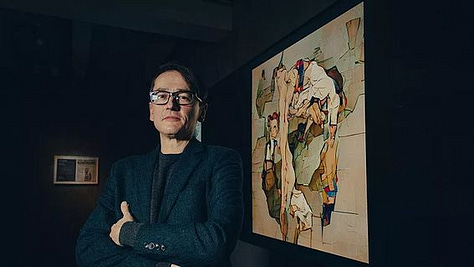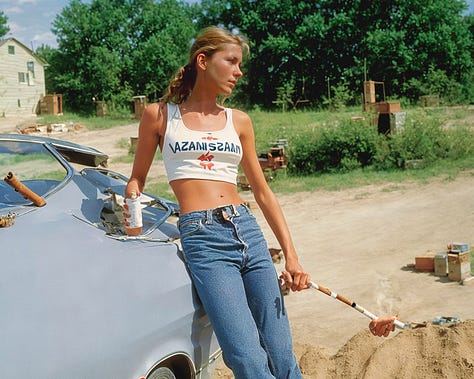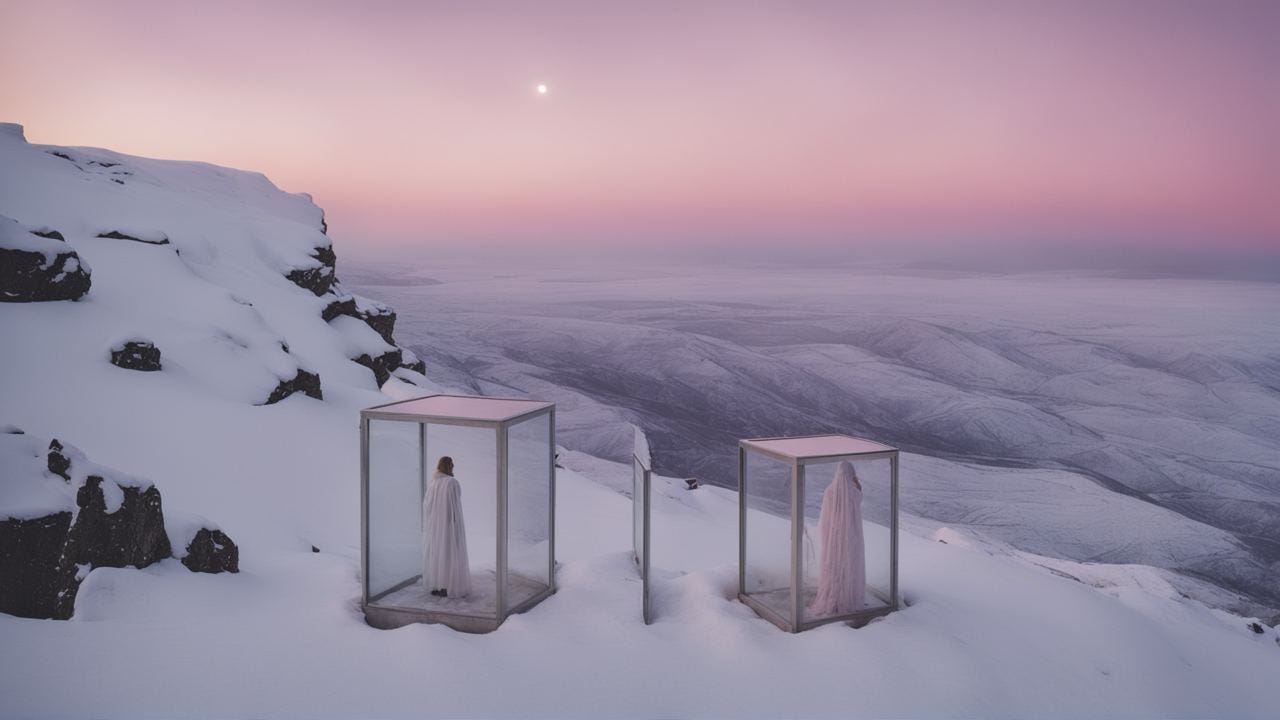The Evolution of AI Art
AI-generated art has faced criticism but is rich with innovation. This blog explores breakthrough concepts, pivotal sales, and key ideas driving the evolution of AI art.
On July 17, 2018, Christie's held their first annual Tech Summit in London, marking what would be looked back up as a pivotal moment for the digital art world. To SuperRare, which had launched just a few months prior, this was a golden opportunity to introduce blockchain-based art to the traditional art world. The platform partnered with Jason Bailey, the creator of Artnome, and Robbie Barrat, the first artist to tokenize on SuperRare, to create AI-Generated Nude Portrait #7. The piece was divided into 300 individual frames, each tokenized and included in the Tech Summit gift bags as redeemable ETH cards. Given the innovative nature of the gift and crypto art still being so novel, many attendees did not grasp its significance at the time.
Today, only 12 of the 300 tokens from the Christie's event have been claimed, making the remaining 288 – now known as "The Lost Robbies" – a tremendous missed opportunity for the recipients. Recently, one of the few claimed tokens sold for more than half a million dollars, reflecting the growing appreciation for pioneering AI artwork.
Mario Klingemann, the artist and architect behind numerous early AI works, created and launched an autonomous AI artist called Botto in 2021. Operating as a decentralized entity, Botto combines AI with collective voting mechanisms to generate art. Each week, Botto creates 350 new outputs using open-source algorithms that draw from a vast online image bank. The project’s token-orchestrated community then votes on their favorite piece and the winning artwork is auctioned off. This innovative approach generated over $2 million with its first 22 artworks. By integrating community interaction and blockchain technology, Klingemann found a means not only to decentralize art creation but also to introduce an innovative model for AI-driven artistic - collector collaboration.



Braindrops is a dedicated platform for AI-generated art, featuring larger, iconic collections such as, "Life in West America" by Roope Rainisto. The minting process on Braindrops is lottery-style, where collectors receive a randomly selected piece from a pre-generated collection. "Life in West America" delves into the complexities of the American landscape, blending traditional photographic aesthetics with dreamlike artifacts. Rainisto is often considered one of the pioneers of the “Post Photography” genre, a style of AI-generated artwork that aims to replicate traditional photographic aesthetics and techniques. With each image meticulously generated, enhanced, and edited, Rainisto's work captures a fleeting moment in generative technology.



Fellowship, a platform originally focused on photography, released some of the most sought-after post-photography collections in 2023. With carefully selected and well-curated exhibitions, Fellowship has quickly risen to become the tastemaker of the AI-generated art scene. The platform has also played a role in establishing the provenance of the genre, looking back in history to release works from what is widely considered the first-ever text-to-image model. Developed in 2015 by Elman Mansimov, alignDRAW generated a total of 2,709 images from 36 text prompts. Fellowship released these in 2023, utilizing a fully on-chain approach. Noticing a trend where collectors appreciate the intersection of technological innovation and new artistic approaches.
Playground's Vision platform represents a new leap in the convergence of AI-generated art and the blockchain by enabling artists to live mint collections onchain. The concept of live minting is in contrast to the traditional method of minting pre-generated, selected outputs. Vision equips artists with AI-attributed smart contracts and allow fine-tuned Stable Diffusion models, seamlessly integrating their creative vision with AI’s generative capabilities. This dynamic approach allows for the creation of unique and random artworks in real time, characterized by an element of surprise and exploration. Unlike static pre-generated images, Vision ensures transparency and safeguarding artists' intellectual property, while challenging them to control the outputs, exploring the latent space. This method fosters a new genre of generative storytelling, merging technological innovation with artistic expression to push the boundaries of digital art.
Playground's Vision platform addresses the limitations of static digital art by enabling real-time generated artworks, advances a collaborative creation process between artists and collectors. This new approach lays the foundation for a future where AI-generated art can engage collectors directly in the creative process. We envision these interactive processes integrated in games with evolving narratives and virtual worlds where users co-create unique digital environments. Ultimately, the democratization of access and enhancement of creative collaboration will push the boundaries of what digital art can achieve, making the art experience more participatory and enriching.
The evolution of AI art is marked by significant technological advancements, innovative concepts, and notable price developments. From Robbie Barrat’s early experiments to high-profile auctions at Christie’s, and the emergence of specialized platforms like Braindrops and Fellowship, AI-generated media will continue developing into new forms of entertainment and potentially even replace certain traditional media entertainment.
If you're an artist working with AI, we invite you to join our journey. We are excited to collaborate with artists interested in launching live-generated collections and exploring new ways to create art and tell stories. If you are interested in creating a new collection with us, show a sample of your ideas and work and connect with us on one of our channels:
Submit your Artist Profile and Project Idea here.
Connect with us on Discord in the "Artist" channel.
Thanks for reading Playground! Subscribe for free to receive new posts and support our work.








